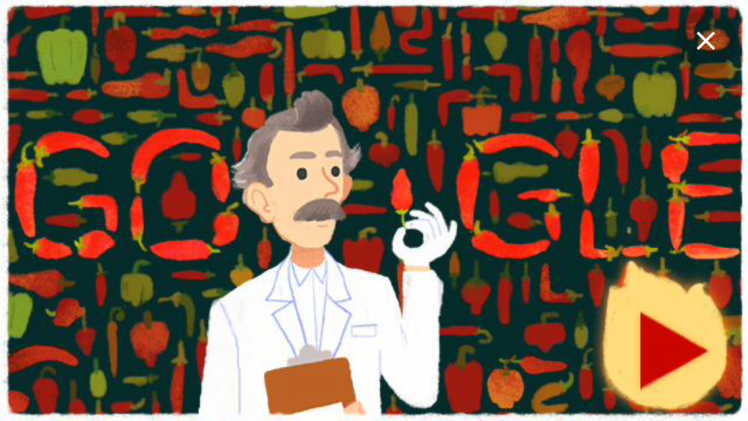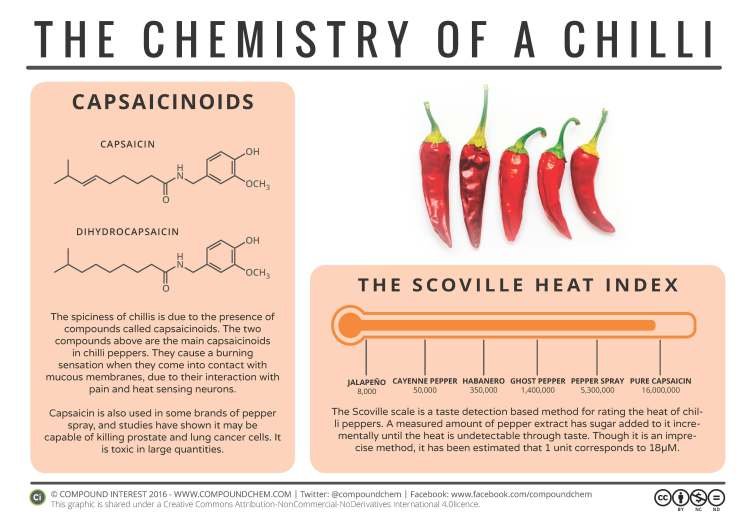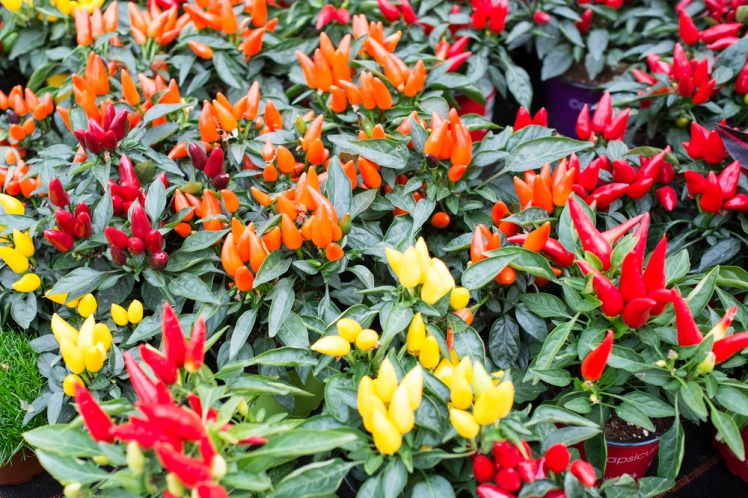Friday, January 22nd was the 151st anniversary of Wilbur Scoville’s birthday commemorated by the Google Doodle with a fun game:

Scoville was born in 1865. Another famous Wilbur, Wilbur Wright, just a few years late (A post US Civil War baby Wilbur boom?). Both of course were contributors to our modern age and culture (and no, I am not quite putting peppers on par with controlled flight). Scoville was a trained pharmacist and spent most of his career, mostly for a company called Parke-Davis. The Scoville heat scale (from 1912), as we know it now, came out of a production intiatitive byt the company, to improve one of it’s pain relieving creams called Heet.
Though his heat scale is what he’s remembered most for now, it was just a part of one project for him. A bigger part of his legacy was a text book, “The Art of Compounding” that was used for decades (see this piece in Vox).
Compound Interest has a post about what makes chili peppers hot. Mostly, it’s capsaicin. It’s what makes things hot.

Peppers fall into the ‘irritant’ category more than anything else, though capsaicin can be lethal if too much is injested. It’s also the active ingredient in many pepper/bear sprays (pure capsaicin has a Scoville rating of 16 million). For something that can induce pain in people, it might seem to make on sense to use it as a pain reliever. But that is where nightshade family plants and the compounds they produce get really intersting. In some dose levels or places, they do one thing, like working to relieve pain, while in another, they can be dangerous or deadly. Capsaicin may cause an increase in pain, but after over-stimulating nerves, all of the pain is then dulled as a result. Though capsaicin is still in some pain-relief cream, the main active ingredient derived from a plant, methyl-salicylate.
From their origins in The Americas and after the Columbian exchange, some pepper species were moved around the world and people started experimenting with breeding new varieties of peppers and cultivating them all over the world and they created (and continue to create) ever hotter varieties of peppers. One notable example is the Ghost pepper that is cultivated in India. Mary Roach wrote a great account of a trip to Nagaland to experience the over 1 million scoville unit scale pepper for Smithsonian Magazine. There are head takers, a pepper competition, and of course, the author tries a ghost pepper.

Scoville’s method for gauging capsaicin is delightfully old-timey. He’d dry down various peppers and re-constitute them in oil. He would then dilute the pepper extract in sugar water and would dilute the extract until it could no longer be detected by a panel of five tasters. In modern times, we have high-performance liquid chromatography to precisely determine the amounts of capsaicin. these are then back-converted to the Scoville scale. 15 units on the Scoville scale represents about 1 part per million of capsaicin. A little capsaicin goes a long way.
These days, several peppers vie for the title of “hottest pepper”. One single pepper of the Moruga Scorpion variety measured 2.5 million Scoville units. But the highest average pepper award currently belongs to the Carolina Reaper currently, at 1.5 million Scoville Units.
Of course, in fiction, peppers can go much higher…as in the “Guatamala Insanity Pepper” that makes Homer badly hallucinate in The Simpsons.
Now, we know that humans enjoy eating peppers and can get increasingly tolerant of hotter and hotter peppers over time. Our bodies and nerves lose sensitivity after repeated exposures. So humans, at least, have managed to get around the pepper’s chemical defense. And that is what this is, defense of the seeds and fruit from insects and mammals. Birds, however, don’t have receptors for capsaicin and can eat peppers to their heart’s content. As well as the seeds of the pepper. Enough of the seeds survive the bird’s digestive tract to be dispersed further than a mammal or insect could carry them. In a way, the plant has developed two methods of dispersal: one by birds, and the other by humans continuing to propagate them all over the world because we like to eat them and perhaps put them to medicinal use.
Scoville helped quantify an aspect of chemistry and the natural world, as well as having a lasting impact on our culture. In a future post, I’ll write about a contemporary of Scoville’s who made a much greater contribution using natural products and chemistry to help humans: Percy Julian.